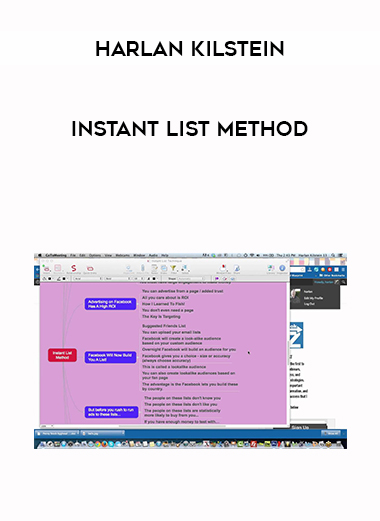
Dan John – Reasonableness
Webrip – 9 MP4s
|
REASONABLENESS AS A STANDARD
In Junior College, I majored in Paralegal Research at Skyline College. My days were filled with the great canon of Western Civilization and long classes on business and criminal law. The two fields intertwined nearly every day. As we were discussing the ideals of Classic Greeks, I will grab my bag, walk down the hall and hear about the basic legal standard. To understand the law, you must, first and foremost, understand “reasonable” and “reasonableness.”
I have always thought this definition of the reasonable person by Percy Henry Winfield to be, well, reasonable:
He has not the courage of Achilles, the wisdom of Ulysses or the strength of Hercules, nor has he the prophetic vision of a clairvoyant. He will not anticipate folly in all its forms but he never puts out of consideration the teachings of experience shows such negligence and so will guard against negligence of others when experience shows such negligence to be common. He is a reasonable man but not a perfect citizen, nor a “paragon of circumspection.”
This sounds like a lot of people I know.
Reasonableness is not only a pillar of the study of law, but it used to be considered one of the rocks of a person of integrity. Integrity, according to my mom, was being one person all the time no matter what the circumstances. I have been with Cardinals of the Catholic Church at dinner, stars from Broadway, professional athletes, Olympians and fitness models, yet I strive to follow this simple advice from my mother. Ideally, at my funeral, you will all be talking about the same guy in my urn or casket.
Integrity comes from the same root as integer. Basically, like a whole number, integrity asks you to be a whole person. I have found, and this is nothing unusual as billions have done it before, that being reasonable in your thoughts, actions, beliefs and approach to life allows you handle the contradictions, disparities and unpleasantness of living in community.
My old college coach, Ralph Maughan, had a sign on his desk:
“Be Reasonable. Do it my way.”
Coach Maughan, who was drafted by the Detroit Lions, made an Olympic team as a hammer thrower, won the nationals in the javelin and earned three medals at the Battle of the Bulge, maybe had more reasons to be reasonable, frankly. Coach Maughan, part of the Greatest Generation, had seen and done things that were glorious and tragic and understood life well. “His way” was usually a pretty good idea.
Earl Nightingale tells us in “Lead the Field,” the audiotape series that changed my life:
And, to me, reasonableness is another word for integrity: integrity to truth, to the evidence, no matter where it leads…Are you ready to discover “through experiment and reflection what course of life will fulfill those powers most completely?” That’s being true to yourself; that’s integrity; that’s reasonableness.
“To the evidence, no matter where it leads” is the drumbeat of my search for better ways to seek and attain our goals in fitness, health and sports.
This point is the cornerstone of my talks as we see the question: “Well, where do we get this evidence?” For me, I have been lucky to have great mentors throughout my career, starting with my brothers. I also was smart enough to trust to follow simply what the “best” were doing and, like I often say about Pavel’s programs, “Do This!”
In recent columns, I have also discussed the importance of trusting your own experience, which I discussed “On Drinking and Phenomenology.” I’m also a huge fan of REAL science in the field of fitness, strength and health.
Before I give accolades, let me tell you what I hate in the field of fitness, strength and health: getting a bunch of untrained people to test a strength program OR using hungover college freshmen to prove your program OR testing something under 13 weeks and pretending that it works for every situation and everyone.
I often discuss the pioneering work of Dr. Thomas DeLorme and Dr. Arthur Watkins working with both polio patients and the injured soldiers of WWII. In 1945, DeLorme wrote a paper, “Restoration of muscle power by heavy-resistance exercises,” published in the Journal of Bone and Joint Surgery.
In 300 cases, he found “splendid response in muscle hypertrophy and power, together with symptomatic relief,” by following this method of 7-10 sets of 10 reps per set for a total of 70-100 repetitions each workout. The weight would start off light for the first set and then get progressively heavier until a 10RM load was achieved. Over time, things changed in terms of volume. By 1948 and 1951, the authors noted:
“Further experience has shown this figure to be too high and that in most cases a total of 20 to 30 repetitions is far more satisfactory. Fewer repetitions permit exercise with heavier muscle loads, thereby yielding greater and more rapid muscle hypertrophy.”
A series of articles and books followed where they recommend 3 sets of 10 reps using a progressively heavier weight in the following manner:
Set #1 – 50% of 10 repetition maximum
Set #2 – 75% of 10 repetition maximum
Set #3 – 100% of 10 repetition maximum
In this scheme, only the last set is performed to the limit. The first two sets can be considered warm-ups. In their 1951 book, Progressive Resistance Exercise, DeLorme & Watkins state: “By advocating three sets of exercise of 10 repetitions per set, the likelihood that other combinations might be just as effective is not overlooked… Incredible as it may seem, many athletes have developed great power and yet have never employed more than five repetitions in a single exercise.” I love that last line.
It’s easy to miss their audience: injured vets and polio victims. My mother of Blessed Memory, Aileen Barbara McCloskey John, feared little in her life. She grew up very poor and then things got worse with the depression. Nearly every male in her life fought in various wars and, admittedly, I did see her cry every day when her sons were in Vietnam. But, nothing frightened her except Polio. Polio was the scourge of youth and destroyer of lives for generations. The causes were thought to be swimming pools, ice cream and open windows. And, literally overnight, with a series of vaccines, the curse ended. Modern weightlifting’s ability to help victims of this disease regain the use of limbs allowed the barbell to become more mainstream in the eyes of many people.
DeLorme and Watkins give us a template for reasonable. My two experiments with Nautilus and Crossfit were, in part, because they seemed so reasonable at that time. The Nautilus facility here in SLC was within walking distance of my apartment and I could get a life affirming, hard workout in well under an hour. As a young teacher with four academic preps (for non-teachers: I was teaching at a College Prep school and I had to prepare nightly for four lectures from Ancient Civ and Western Civ to Modern American History and Economics…a broad range). I made great physical progress for a few months and stalled out.
I consulted Ellington Darden by telephone a few times and he convinced me to less and less. I have often mentioned it was his passing comment, “Play some chess,” that encouraged me to become the school’s chess coach, something I still recommend for young football coaches. But, this style of training soon stagnates and, as a thrower, it was impossible not to see the fact that my distances were suffering. Returning to the platform, I added a few Olympic lifts and soon was back on “track” (lousy attempt at Track and Field humor).
My first exposure to Crossfit was the same: when I first came to the Internet, both Tamir Katz and Robb Wolf asked me to launch a website to “counter” the “HIT Jedis.” It’s odd to think of this now, but the early Internet fitness sites were limited to mostly “High Intensity Training” people (HIT Jedis is the term they used for themselves) and Atkins Diet webchains. I would almost have to sit down and explain things to many of you about the web in 1998: it wasn’t the same as it is today and “most” of the sites had exploding hearts and tumbling kitty GIFs.
When I first heard about Crossfit, I still had my softhome.net email address which, sadly, I can’t access now. You can read what I was reading here at the Crossfit Archives. One thing that hit me as I read them over again is the lack of swimming in the past few years on the main site. I asked Greg about this a decade ago and he told me that whenever he would post a swimming workout that he would get emails about substitutions, so he dropped swimming completely.
Things have changed…I just can’t imagine emailing Crossfit now about a “scaling” question or exercise substitution and getting a response back from Greg. Although one can argue about those archives and doing Max Pull Ups right after Max Bench Presses (that was the combo that blew my friend’s shoulder off (Jerry or “9-7” as everyone calls him) and some of the other workouts, but, honestly, overall the workouts were reasonable and doable. A young man got hurt this weekend doing a Crossfit comp and I saw what was expected and it simply isn’t reasonable. Percy Henry Winfield, and many jurors, would not define this as reasonable.
“To the evidence, no matter where it leads” will continue to be my framework in designing training. The longer I play in this game, the more I become convinced that what Coach Maughan told me about training is THE truth of what we do:
“Little and Often, over the long haul.” I have been lifting since 1965, coaching since 1979 and I am just beginning to understand what the “long haul” means.
Until next time…my best to you and yours.






![[Audio Only] CC19 Workshop 15 - Advanced Relational Life Therapy (RLT) - Terry Real](https://intellschool.info/wp-content/uploads/2022/02/ajHcWg3pZEWoZ4CLN52R4A-200.jpg)



























Reviews
There are no reviews yet.